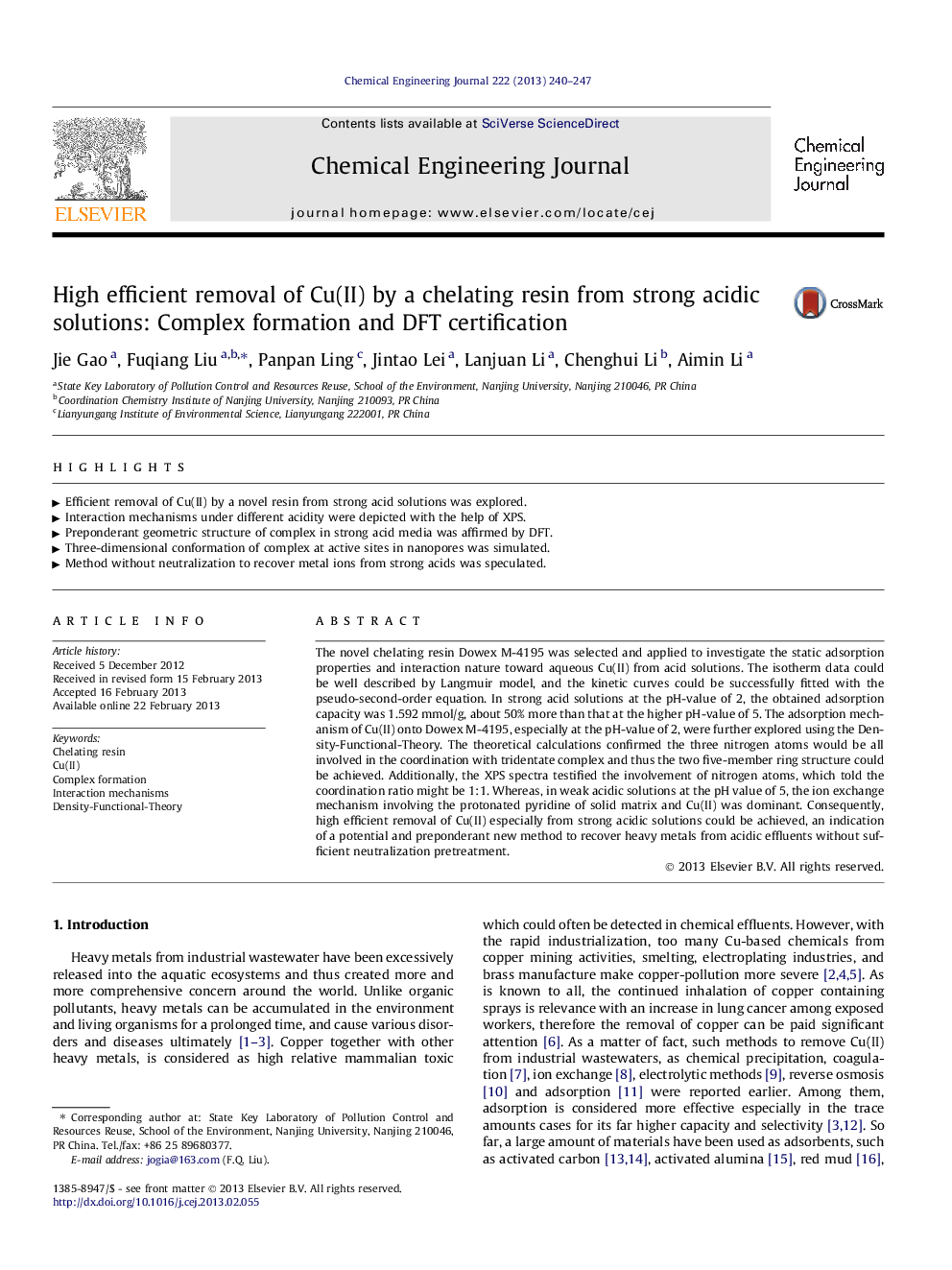| Article ID | Journal | Published Year | Pages | File Type |
|---|---|---|---|---|
| 148560 | Chemical Engineering Journal | 2013 | 8 Pages |
The novel chelating resin Dowex M-4195 was selected and applied to investigate the static adsorption properties and interaction nature toward aqueous Cu(II) from acid solutions. The isotherm data could be well described by Langmuir model, and the kinetic curves could be successfully fitted with the pseudo-second-order equation. In strong acid solutions at the pH-value of 2, the obtained adsorption capacity was 1.592 mmol/g, about 50% more than that at the higher pH-value of 5. The adsorption mechanism of Cu(II) onto Dowex M-4195, especially at the pH-value of 2, were further explored using the Density-Functional-Theory. The theoretical calculations confirmed the three nitrogen atoms would be all involved in the coordination with tridentate complex and thus the two five-member ring structure could be achieved. Additionally, the XPS spectra testified the involvement of nitrogen atoms, which told the coordination ratio might be 1:1. Whereas, in weak acidic solutions at the pH value of 5, the ion exchange mechanism involving the protonated pyridine of solid matrix and Cu(II) was dominant. Consequently, high efficient removal of Cu(II) especially from strong acidic solutions could be achieved, an indication of a potential and preponderant new method to recover heavy metals from acidic effluents without sufficient neutralization pretreatment.
► Efficient removal of Cu(II) by a novel resin from strong acid solutions was explored. ► Interaction mechanisms under different acidity were depicted with the help of XPS. ► Preponderant geometric structure of complex in strong acid media was affirmed by DFT. ► Three-dimensional conformation of complex at active sites in nanopores was simulated. ► Method without neutralization to recover metal ions from strong acids was speculated.
